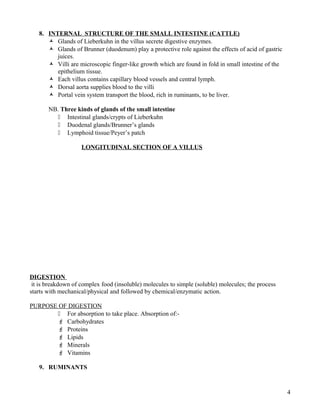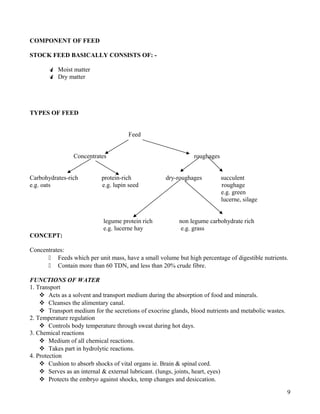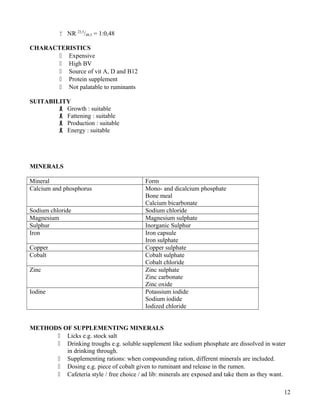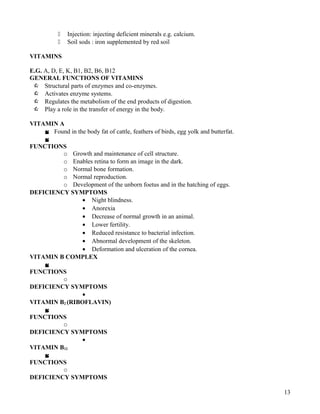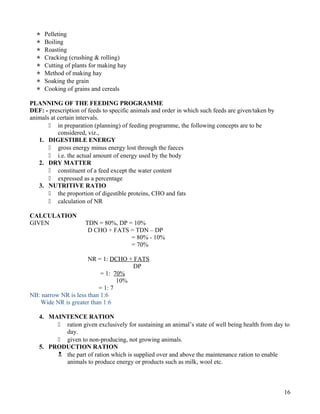This document discusses animal nutrition and digestion. It begins by defining animal nutrition and describing the major nutrients needed by animals. It then describes the alimentary canal and digestive system, noting key parts like the mouth, stomach, and intestines. Several sections provide details on digestion in different types of animals like cattle, pigs, and birds. The document discusses the roles of the liver, pancreas, saliva, stomach acids, and more in breaking down food. It also covers absorption of nutrients and the differences between ruminant and non-ruminant digestion.



